Milkweed is a delicious wild vegetable every forager should know, with many different parts that can be uses in everything from savory dishes to desserts. In this post I'll share everything I know about this incredible wild vegetable.
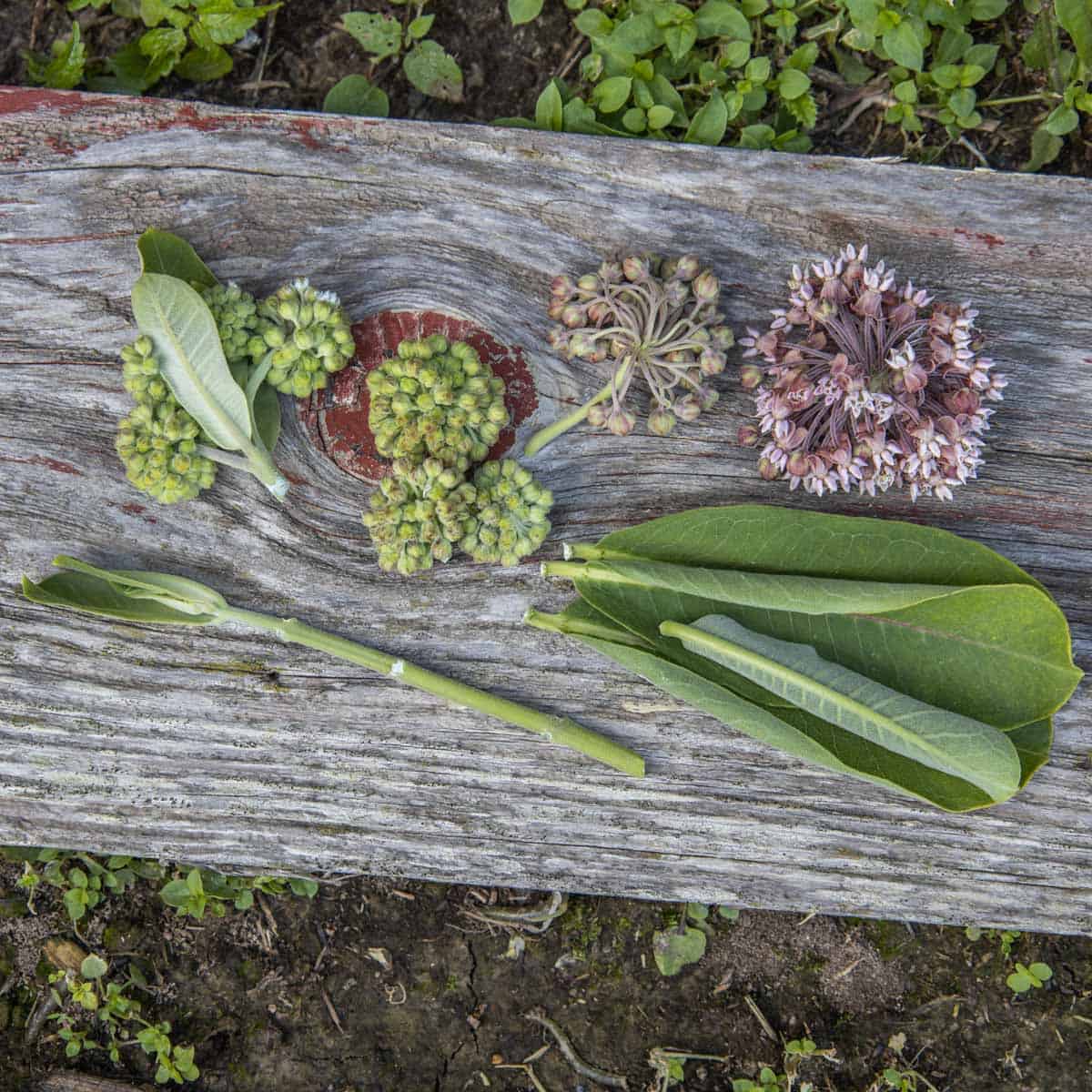
Common Milkweed: A Traditional Food
The various edible parts of common milkweed (Asclepias syriaca is the only species I've eaten in quantity) were traditional foods for indigenous peoples of North America. In Native American Food Plants, Daniel Moerman mentions multiple parts of the plant being harvested and consumed. My friend Linda Black Elk, a Native American ethnobotanist, also enjoys them regularly, as do many people in the current wild food community.
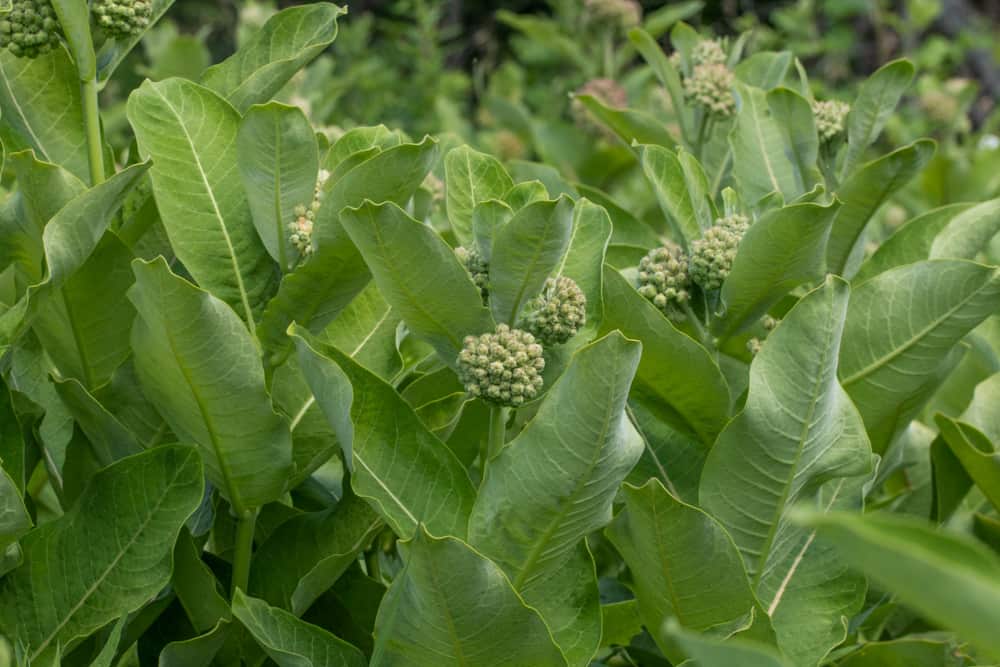
The best essay on edibility and all the edible parts of common milkweed I've read to date is still Sam Thayer's in his original field guide The Forager's Harvest. Marie Viljoen shares a number of recipes using different parts of the plant, in her book Forage Harvest Feast, and common milkweed is featured on the cover of the book How Native Americans Use Wild Plants for Food and Medicine, besides being covered inside the book as an edible.
Edible Species
Of the many species of milkweed, I know only two I can recommend eating: Common Milkweed (Asclepias syriaca), and Showy Milkweed (Asclepias speciosa).
I have some friends who have eaten Asclepias exaltata (Poke Milkweed), but I can't recommend eating it as I haven't personally (besides a few flowers here and there, which are fine as a sprinkle) and I don't see it anywhere near as much as Asclepias syriaca.
Sustainability and Monarchs
There's always been a lot of discussion about Milkweed and the Monarchs, and if harvesting milkweed is sustainable in regards to their conservation status (as of 2020 they're not endangered yet, but they very well could be).
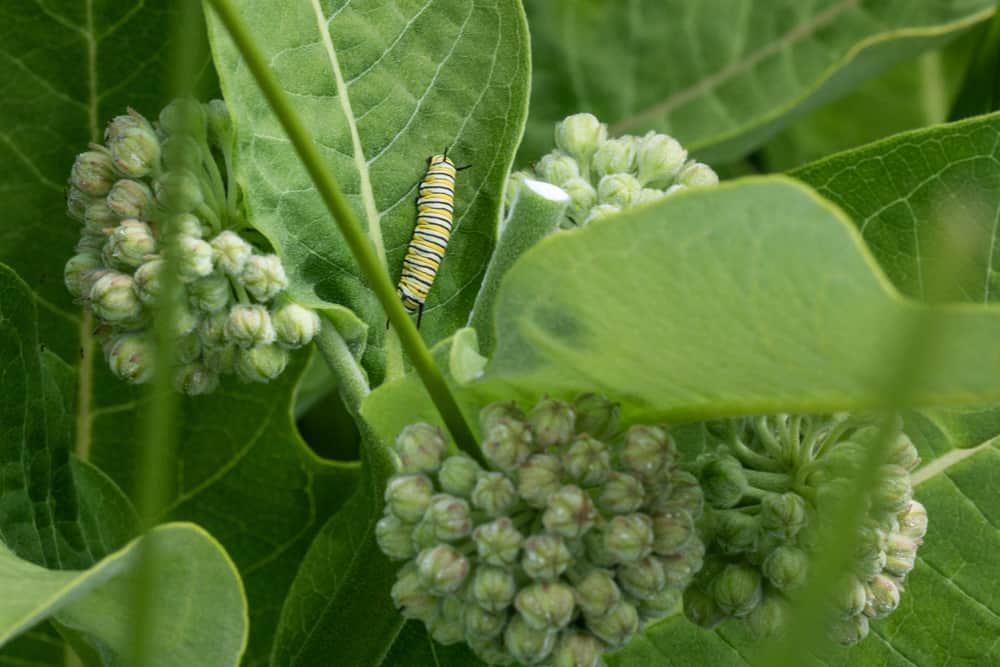
I can assure you, without any shadow of a doubt, that harvesting milkweed can be done sustainably, and not at all interfere with the Monarchs. Here's a few things to consider:
- Monarchs eat milkweed past the stage of being edible for humans. For example, they will eat pods that have matured and wouldn't be safe to eat, as well as leaves that humans would find old and tough.
- If you see a monarch caterpillar on a plant, leave that plant alone-they were there first.
- Milkweed regrows after cutting. What that means, is that if you go to the milkweed in the spring or early summer, and cut down, mow, or harvest the shoots of some of the plants, they will continue to grow and produce shoots, buds, tender tops, flowers, and pods, but they will not reach the height of plants that have not been cut.
- Only harvest milkweed from healthy colonies. Around farm fields, prairie and wild areas. If you only see a couple plants, leave them be.
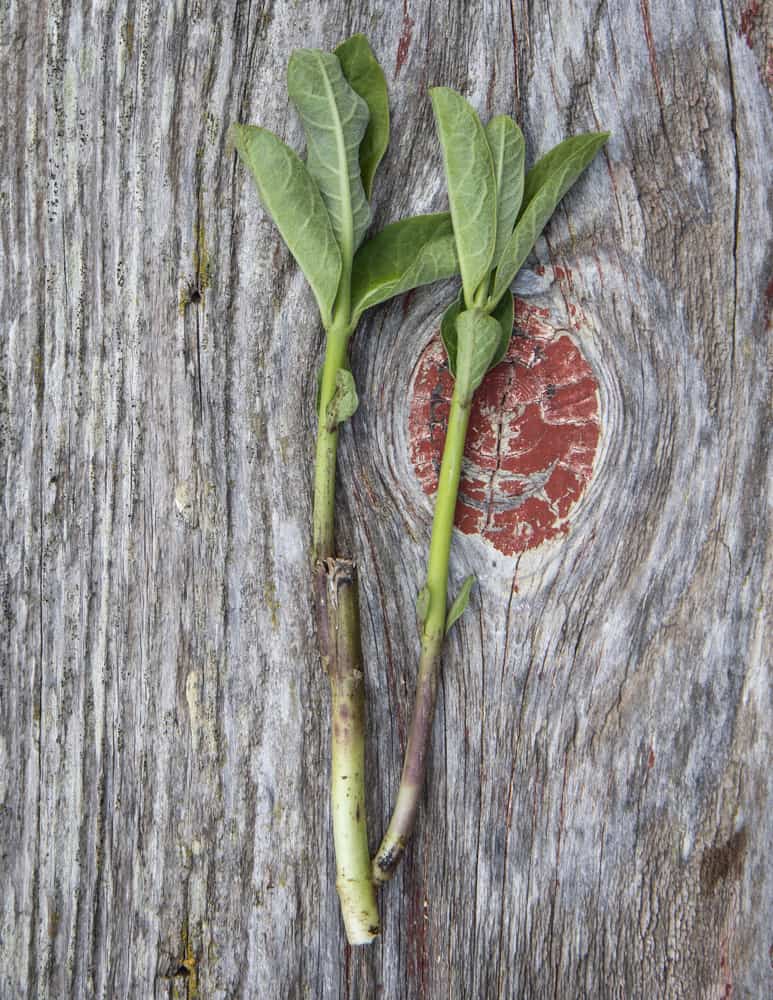
Safety
Next I'll go over harvesting, cooking and eating, but first, safety. Besides the monarchs, milkweed naysayers may claim that it's not edible, that the plant is in fact poisonous to humans. This is not true, it only applies to milkweed in it's raw, uncooked form.
Raw, milkweed contains cardiac glycosides and other compounds that need to be denatured by cooking. Typically the plant is blanched in boiling, salted water, but I also enjoy the buds steamed, and consume the flowers raw in miniscule amounts as a garnish.
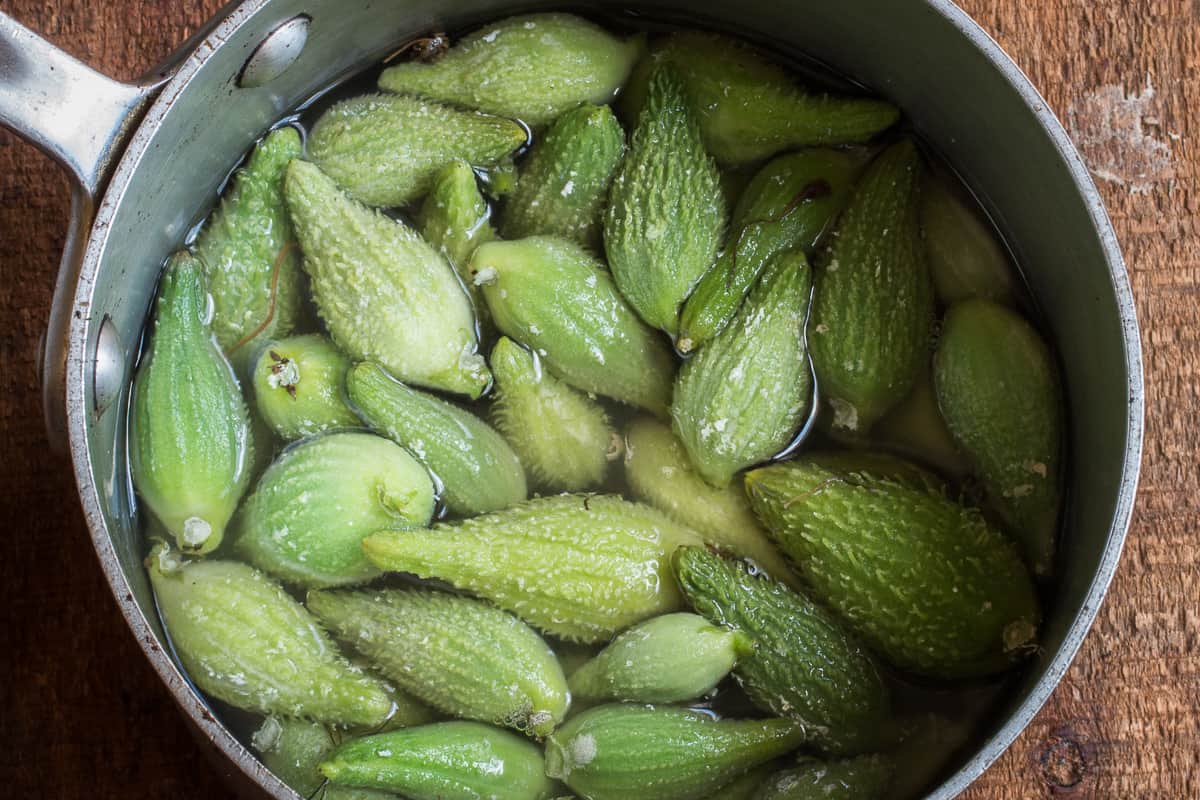
Sensitivities vary
I have never had a problem eating cooked, common milkweed in large amounts (4-6 oz or more) but, just like with many other foods, sensitivities vary, and some people seem to be more sensitive to eating milkweed than others.
This sensitivity (typically an upset stomach) seems to get exacerbated with the amount consumed, so, if you're new to eating milkweed, start with small amounts of well-cooked milkweed, and go from there. That being said, you can eat just about anything in an amount large enough to get sick, like I did as a child when a babysitter allowed me to eat an entire pan of brownies.
Wear gloves to avoid the sap
When harvesting any part of the plant, it's easy to get some of the white sap or latex on you. The sap is sticky and can be difficult get off your hands. You also need to make sure you don't get it in your eyes, as could happen if you wipe them in the heat of the sun.
To get around this, I wear gloves when harvesting large amounts of milkweed, and I put the plants in a plastic bus tub or in a paper bag as the latex gets stuck in baskets. After cooking the sap is no longer an issue.
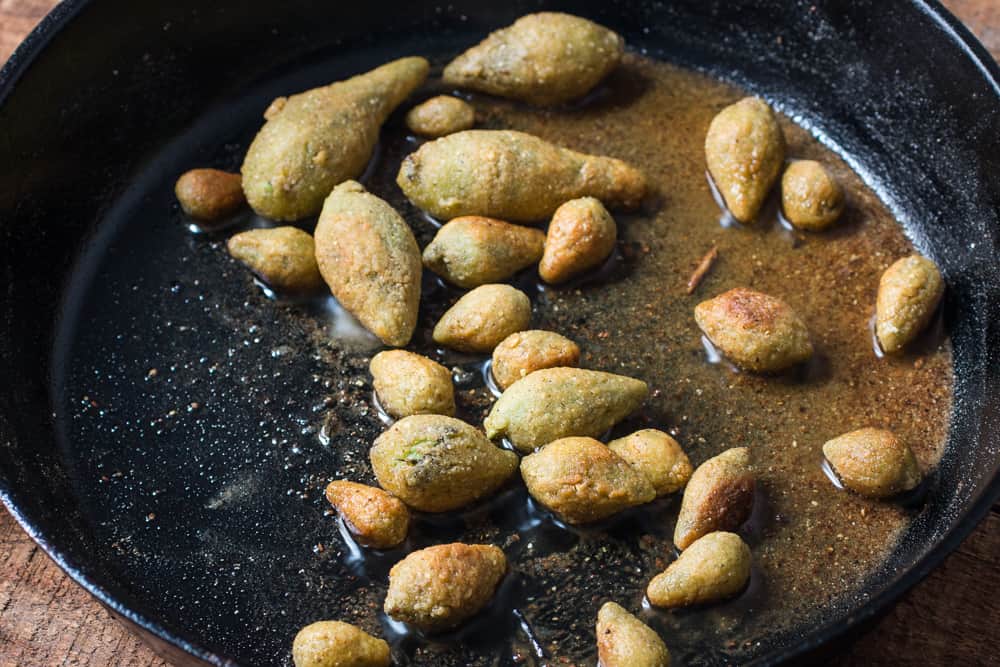
Edible Parts
Shoots
Milkweed shoots are the first harvest the plant gives, and they're a good vegetable.
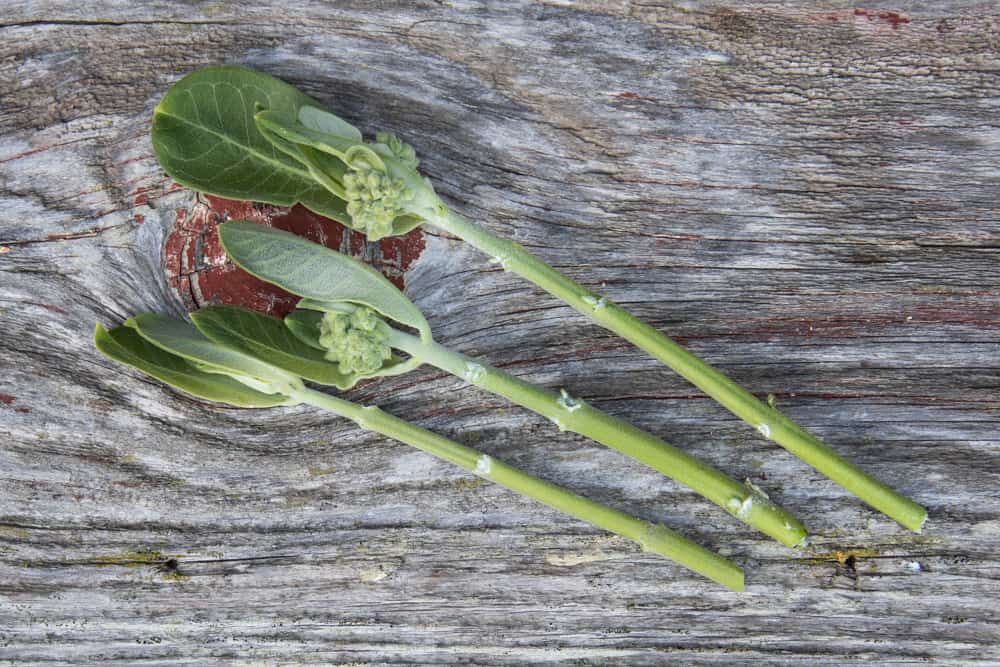
Typically I blanch them until they're tender and taste good to me (roughly 1-3 minutes). When I harvest them, similar to asparagus, I cut them where they're tender, typically the top 4-6 inches of the plant.
Dogbane, a milkweed look alike
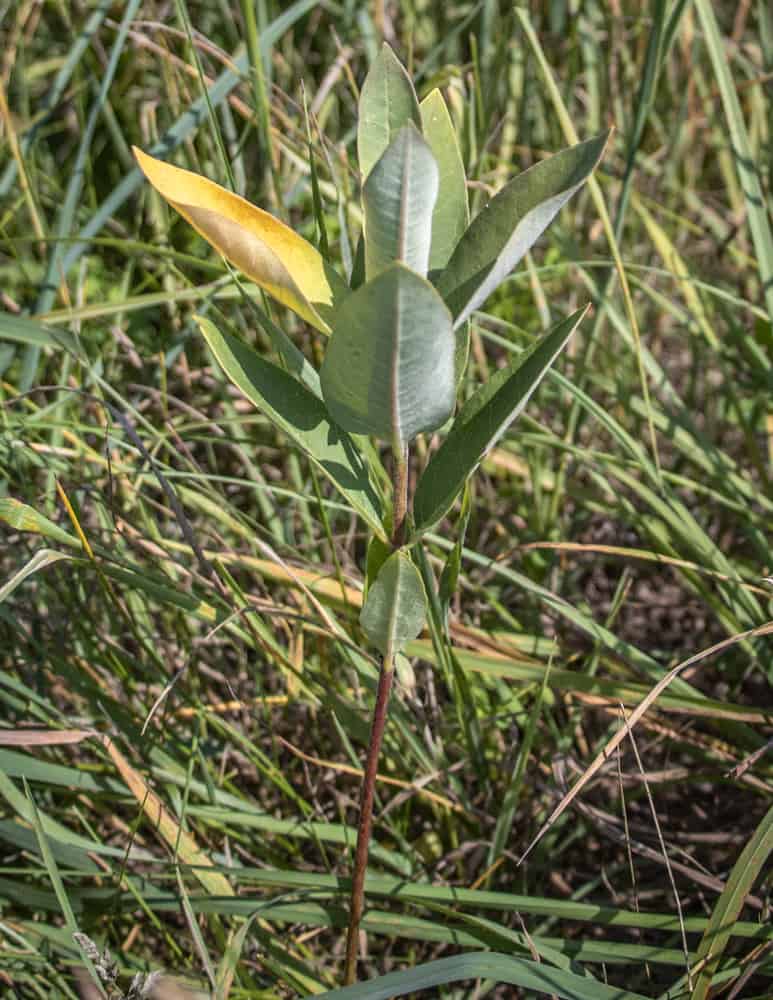
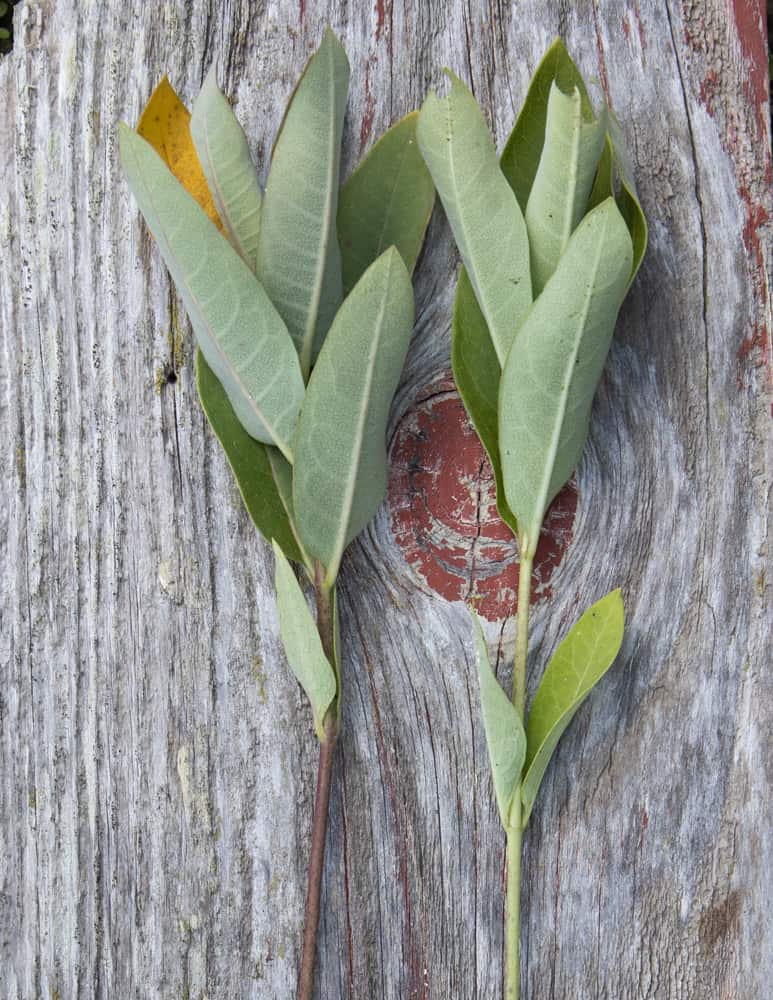
The only look a like to be aware of with common milkweed is dogbane (Apocynum cannabinum). At the stage when you would harvest the shoots, dogbane, to the inexperienced, can resemble milkweed shoots. The shoots below are a bit older than they would be if you were to confuse them with milkweed, but you can notice that they're not quite as thick and juicy looking.
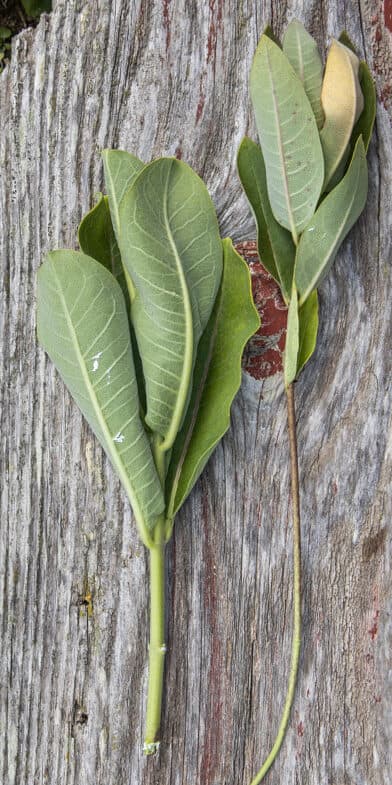
The most important, and most helpful tip I know to differentiate dogbane (besides it's characteristics of being generally more thin and firm than milkweed at the shoots stage) is that dogbane is horribly, terribly bitter.
There are accounts of milkweed being bitter, but it's my professional opinion that those accounts of bitter milkweed, similar to the misinformation spread online and through outdated, poorly researched articles and publications about fiddleheads, is probably due to people misidentifying the plant. Any edible part of common milkweed pictured in this post is not bitter, raw or cooked, at any time of the year, no matter what anyone tells you.
That being said, when I was first learning about this plant I made a soup from dogbane shoots, and served it to another person, along with eating it myself. It was bitter as hell, but neither of us got sick after eating about 2 oz per person of cooked shoots.
Leaves
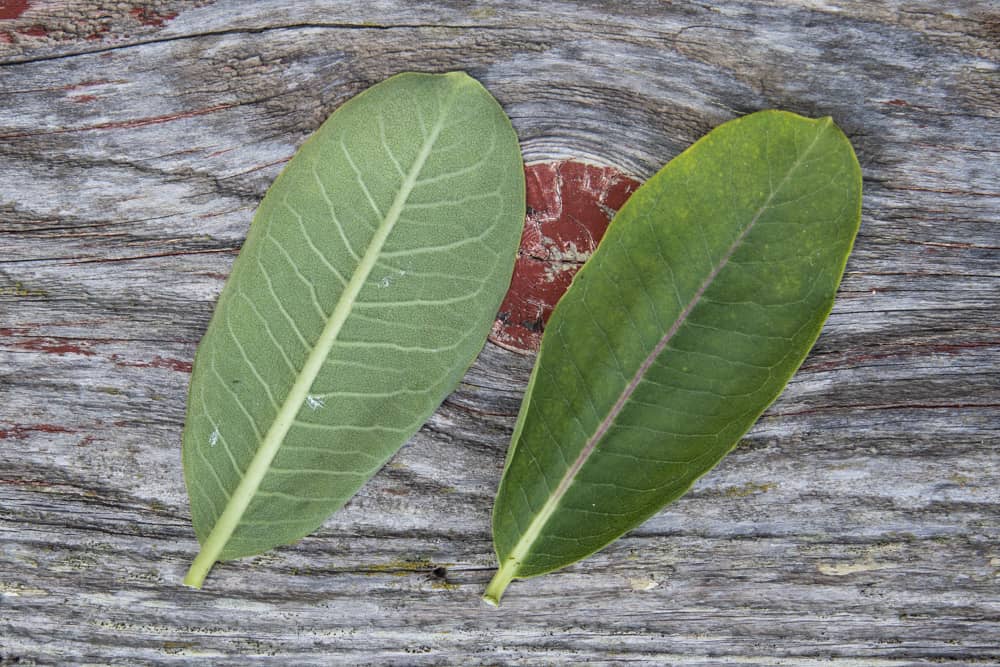
The leaves of milkweed are edible, but they have a slightly leathery texture that gets pronounced as they age, and they can also be tough. I do not typically eat milkweed leaves, but they can be used to make bright green purees to be used in things like pasta dough.

Very young leaves can be blanched, cooked and eaten, just make sure to cook a few and taste them before you add them to a dish. You can also cook them and shred fine before adding to a dish, which will help with the texture.
Tops / Clouches
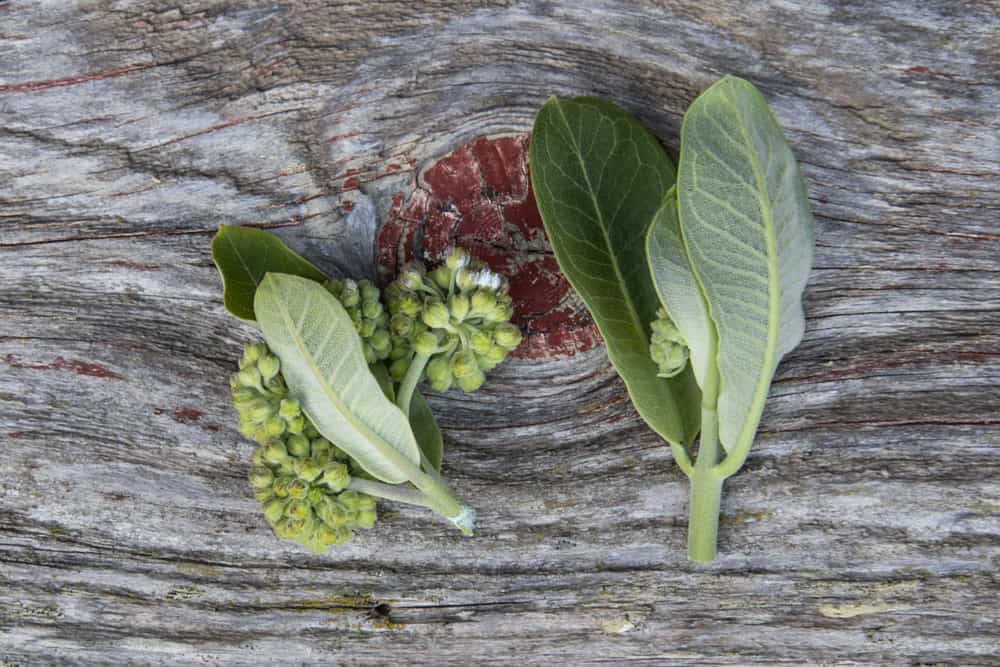
When the young flower buds are just starting, the young growing tops of the plant make a great little vegetable. Just remove the top of the plant, tender leaves, young flower buds and all. Typically I blanch them before adding to a dish.
Unripe Buds / Raabs
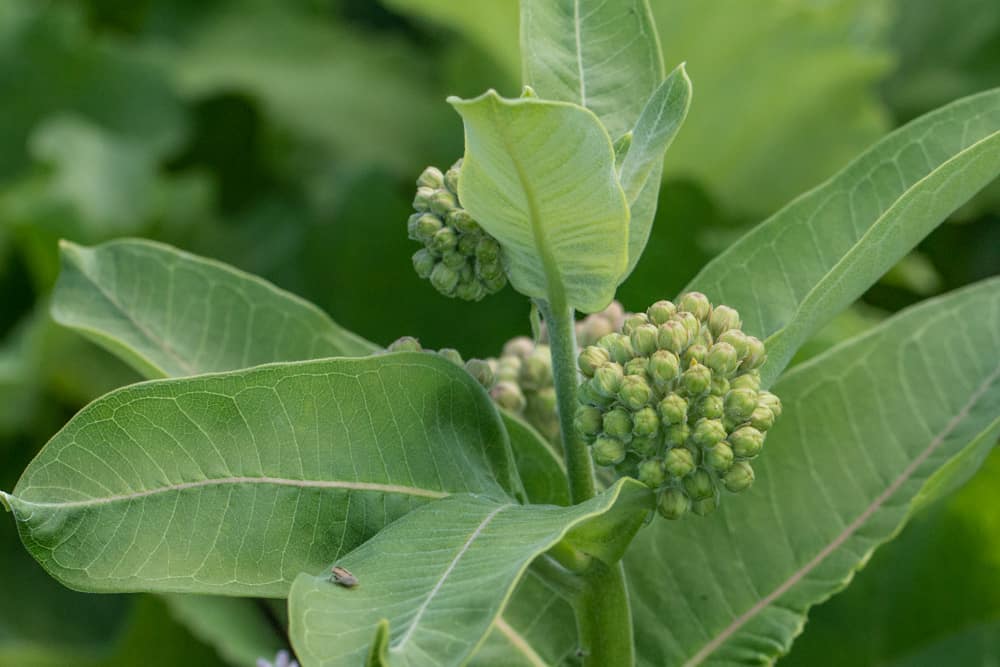
Milkweed broccoli. Besides the pods, these are my favorite part of the plant to eat. Harvested at the right stage, when the buds are large and formed, but still tightly bunched around the stems, these make a great vegetable, and can be harvested in large quantities in a large patch. During the peak of the season, I could easily harvest 20 pounds of them in a couple hours with minimal effort.
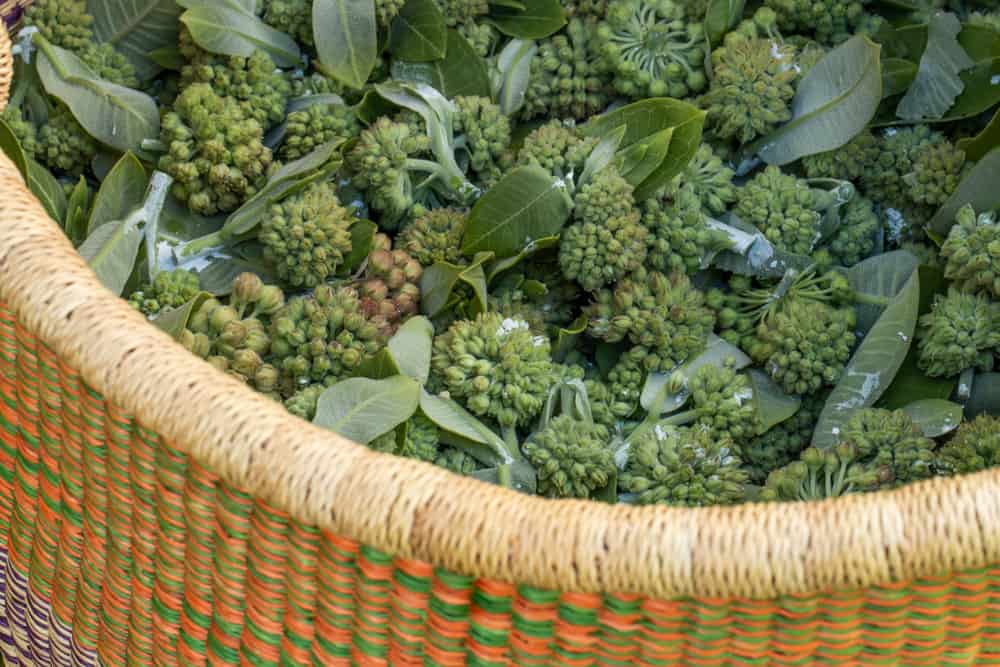
Milkweed buds are interesting in how they cook. They absorb oil and water, so blanching them and then cooking in a pan can make them taste heavy. I prefer to steam them (see recipe) and then nap them with butter and salt at the table.
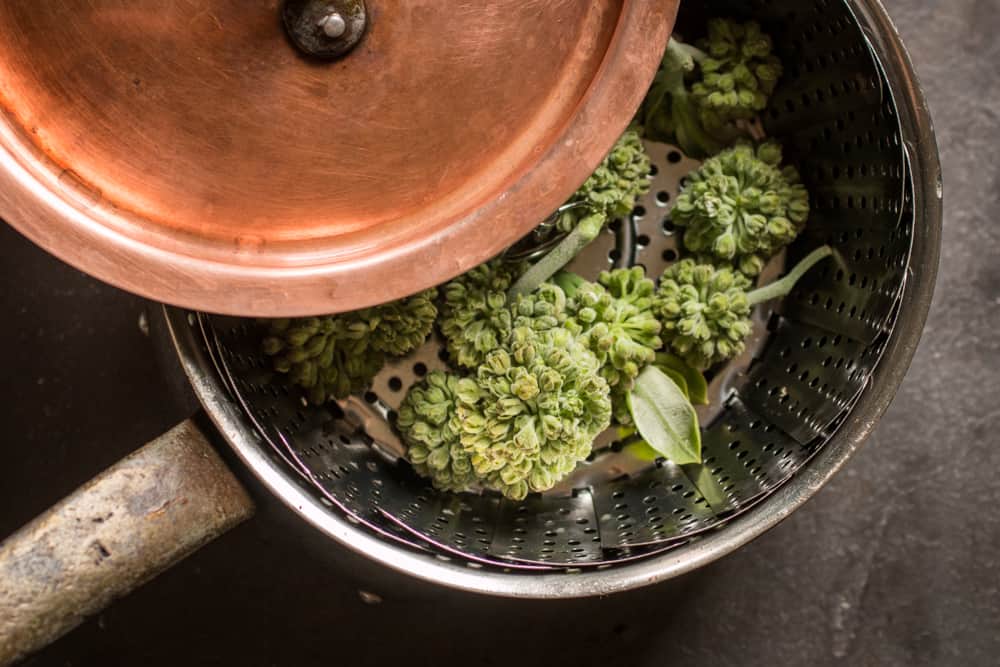
A mix of butter and a sauce of fermented ramp leaves is one of the best things I've ever eaten on them. There's all kinds of recipes out there for milkweed buds, and you can probably use them just about any way you would broccoli. Use your imagination.
Preservation
Since I can harvest far more milkweed buds than I can eat, I've come up with a few different ways to preserve them I recommend you try.
Dehydration
The buds can easily be dehydrated and stored in a jar or other container until you're ready to use them. To refresh them for eating, simply simmer them in some water to cover until they're tender and taste good to you. To dry the buds, put them on a drying rack and dehydrate at 90-100F until cracker dry, then store in an air-tight container.
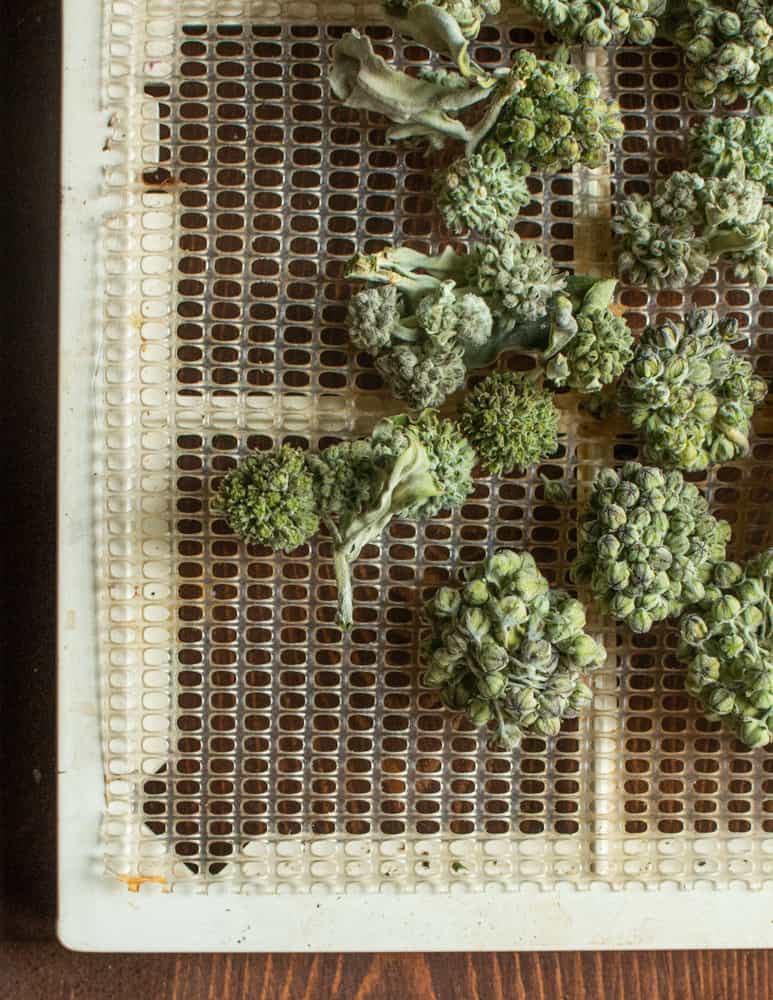

Blanching and freezing
Milkweed buds, as well as the shoots and leaves, can also be blanched and frozen for storage.
Individual buds
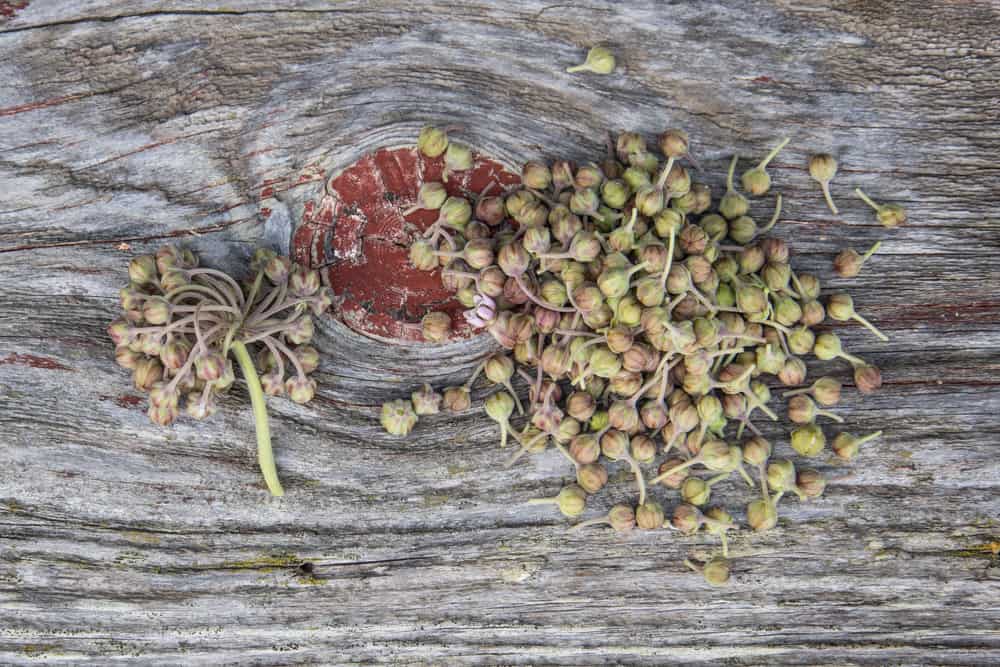
After the stage where the unripe flowers are tight and firm, they'll be more loose, with longer lengths of stem. At this stage, the individual unripe buds (mostly colored red at this stage) can be removed individually or eaten as a cluster, although the whole clusters turn a bit limp and uninteresting to me.
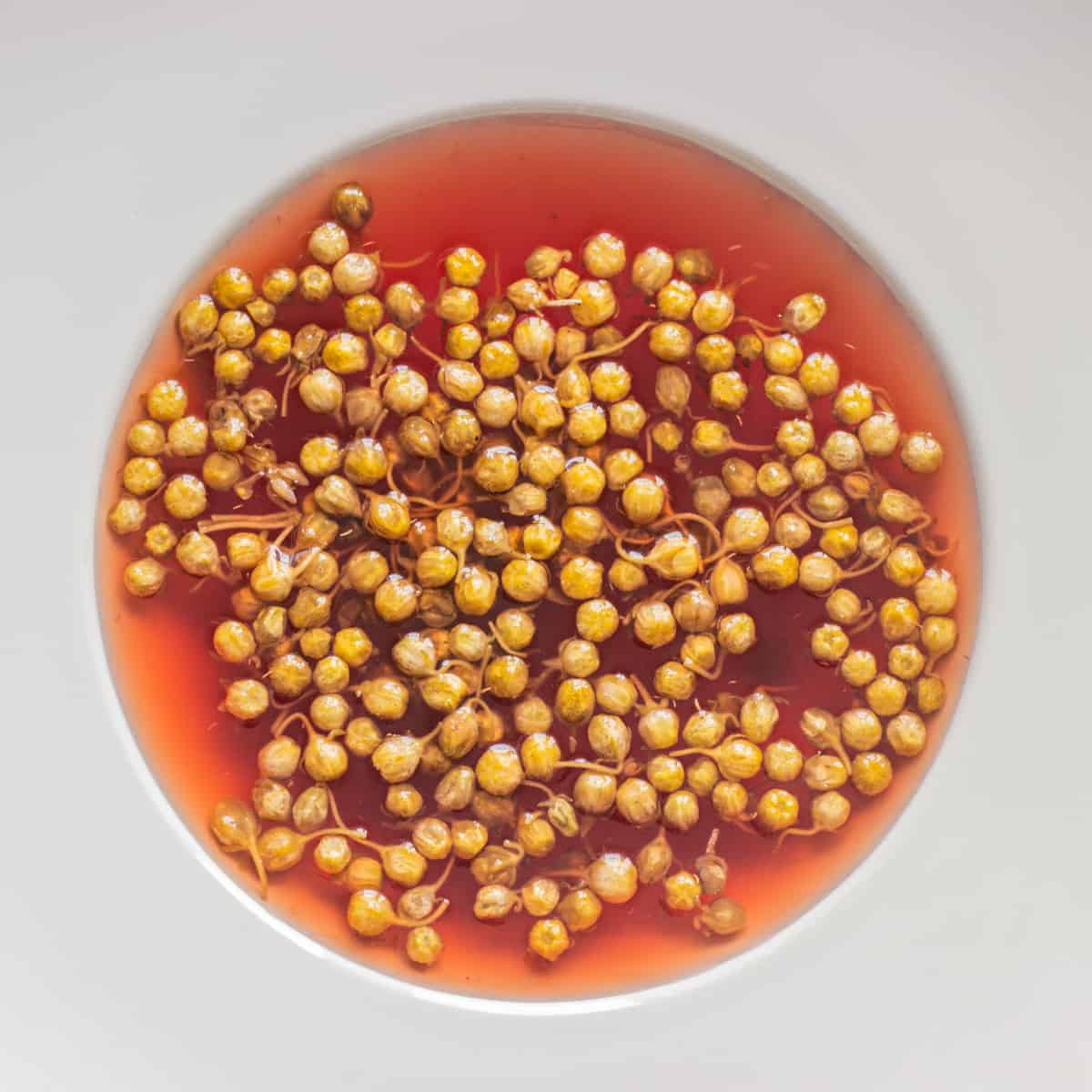
The individual unripe flower buds can also be fermented or salted and used as you would capers, although they're not exactly the same.
Flowers
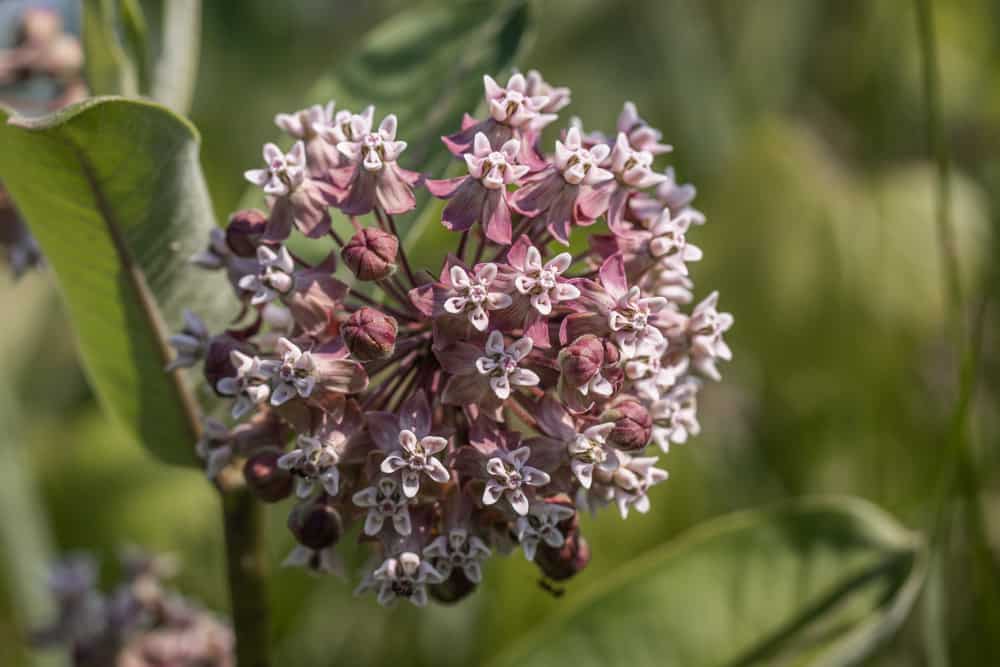
The flowers of milkweed are a really special thing. The plant produces multiple clusters of strongly floral, aromatic flowers, sometimes growing as large as a softball on some plants I've seen. The really fascinating thing about the flowers is their flavor.
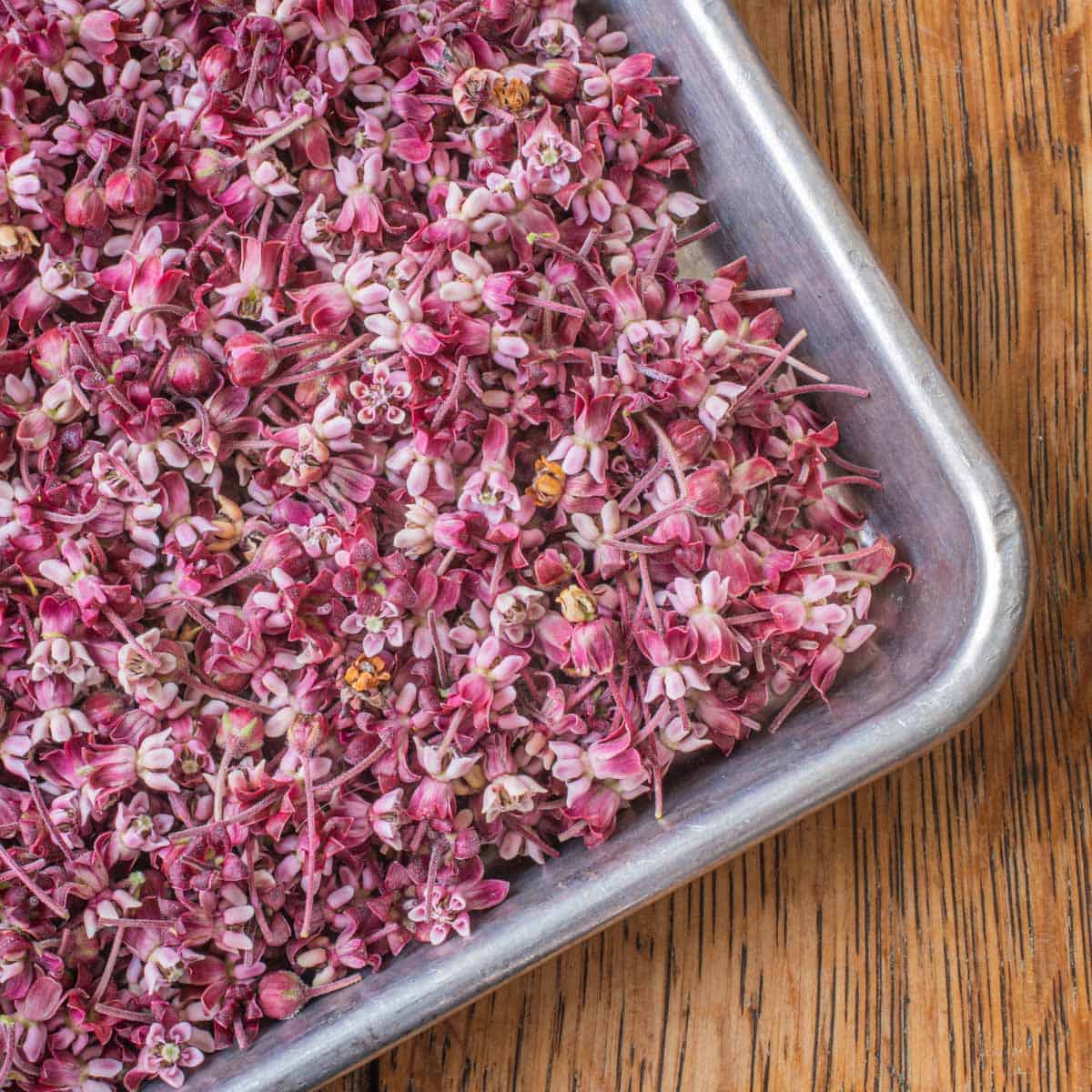
While all the other edible parts of milkweed have a flavor and aroma that puts them strongly in vegetable territory, milkweed flower's intensely floral and sweet aroma make them a candidate for infusing sweet things from drinks to desserts, as well as savory things (vinegar).
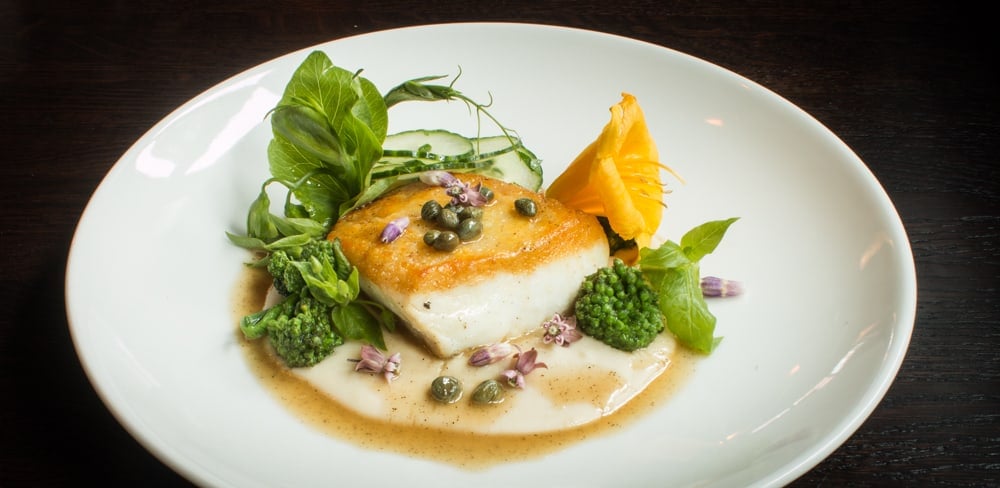
Milkweed flowers, like most other parts of the plant, can be harvested in large quantities, and, as such, it should come as no surprise that indigenous peoples of North America harvested them specifically as a food. The flowers, like the buds, can be dried and rehydrated such as in adding to a brothy soup, where they can be nice.
Using with liquids
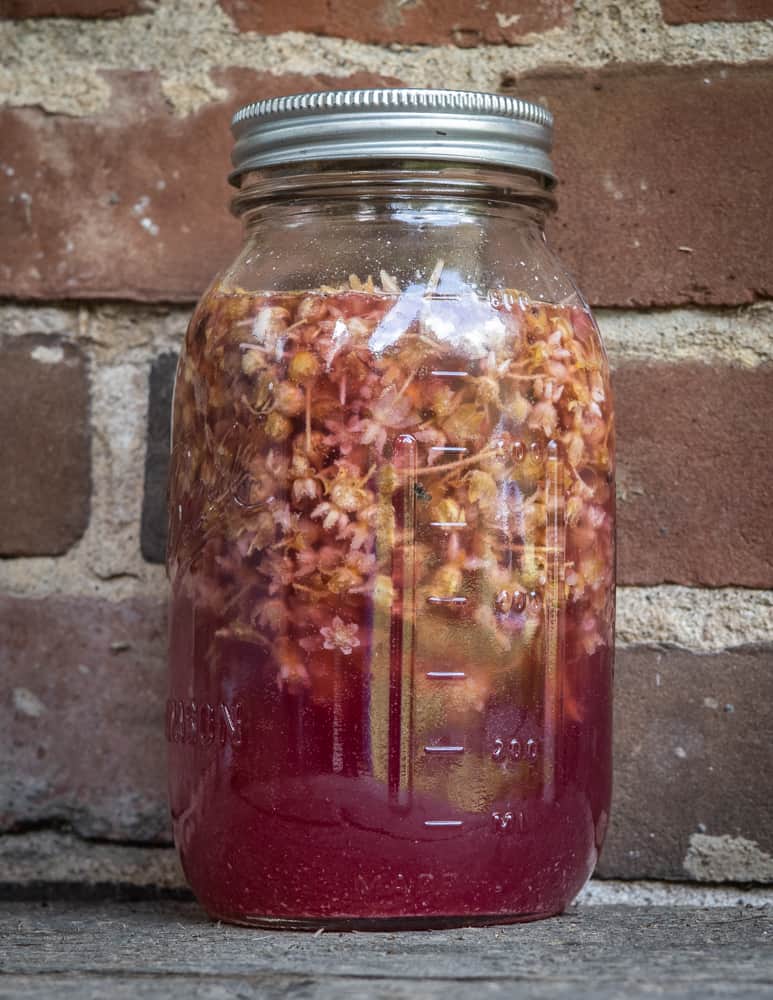
When milkweed flowers are put into liquid (see my milkweed flower shrub for an example), after a few days, they will start to "bleed", turning the liquid a bright, vibrant reddish-pink, as well as transferring their perfume to the liquid. A sugar syrup made with a shrub has a tendency to make drinks taste a bit like Watermelon Jolly Ranchers to me-they have a curiously strong, fruity quality to them.
Pods
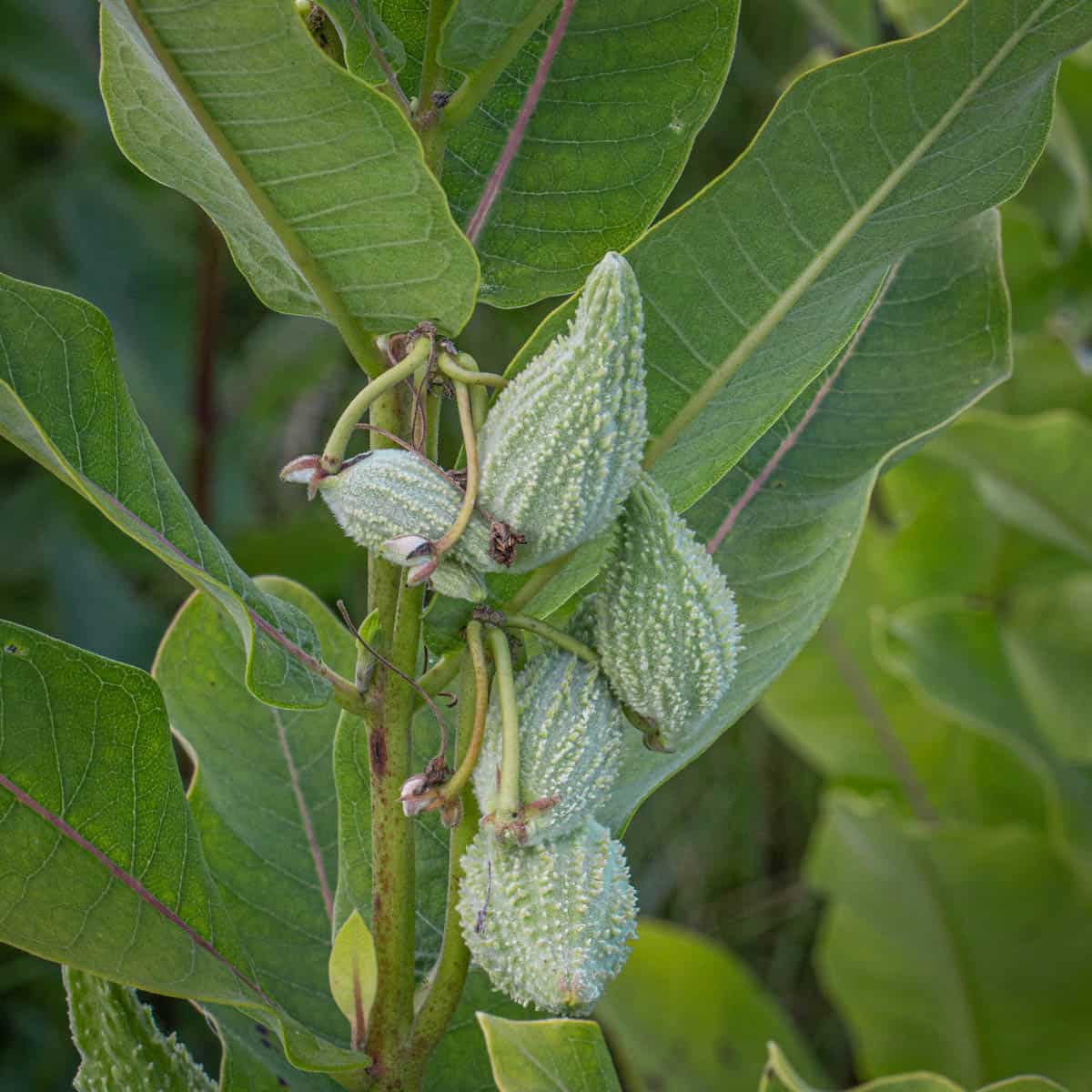
There's lots of wild leafy greens out there, but there are not many truly wild vegetables, so the pods of milkweed are, by far, my favorite part of the plant. On menus in my restaurants, I used to label them as "wild okra" as their shape and green flavor is slightly reminiscent of them. Unlike okra, milkweed doesn't have a mucilagenous/slimy quality to it, so people that don't like okra may find themselves enjoying milkweed.
Harvest pods 2 inches long or less
Just like every other part of the plant, the pods of milkweed have a specific stage of growth where they're good to eat. This stage, as mentioned by Sam Thayer, is just about 2 inches in length. smaller than two inches, and they're a bit too small and undeveloped for me. Longer than two inches, and the outer green covering of the pod will become tough.
Milkweed pods must be cooked to be safe, just like the shoots, tender tops and flower buds. Many people blanch their milkweed pods, and I recommend doing that if it's your first time, but I occasionally make fried milkweed pods from the fresh pod by just soaking them in buttermilk, tossing in cornmeal, and frying as-is.
Just like with other portions of the plant, overconsumption is not advised if you're new to eating it, and some people may need to have milkweed pods blanched before cooking.
Silk

The last gift that milkweed gives is the immature, tender silk on the inside of the pod. With a tender, albeit interesting texture and mild milkweed flavor, the silk can be an interesting thing to try if you find your pods are all past the 2 inch mark, but are not yet starting to produce mature seeds on the inside. The silk should only be harvested when young, tender, and pure white.
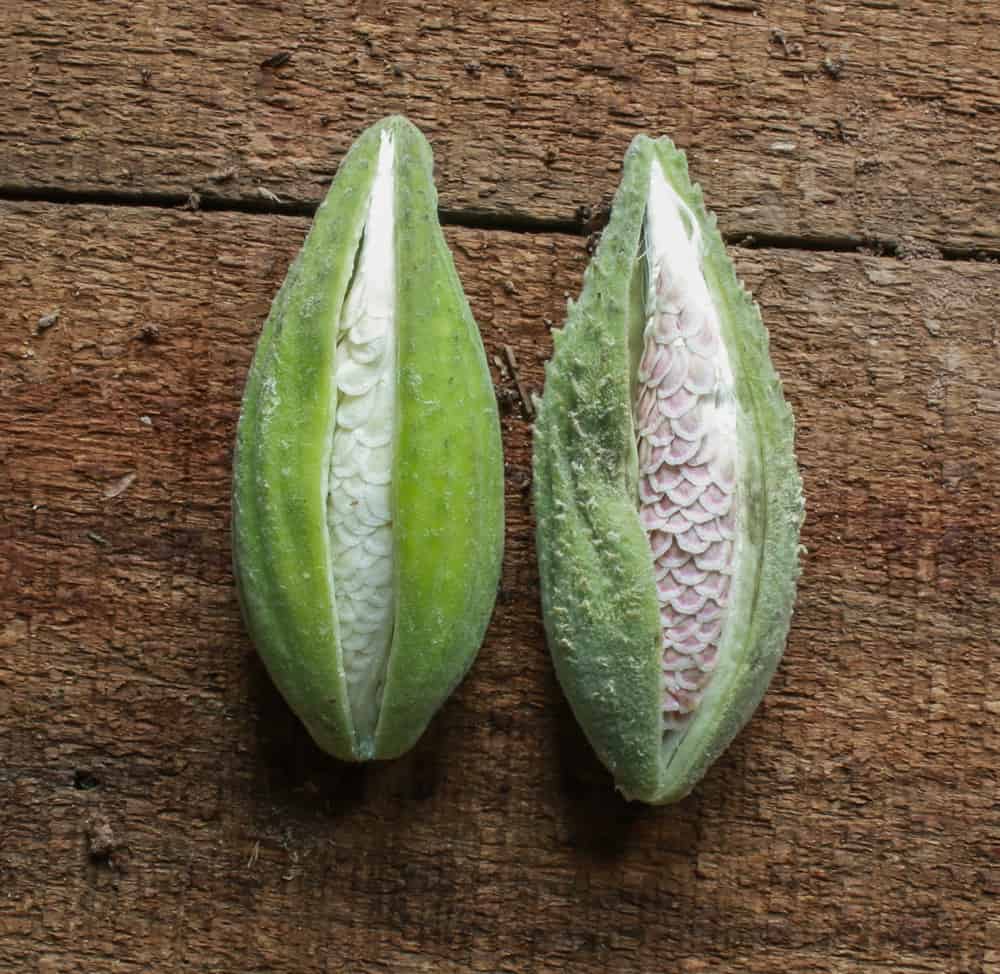
If your milkweed pods have visible seeds on the inside, they're too old, and should not be eaten. The silk can be cooked without blanching by tossing into a pan along with other vegetables, preferably in a wet environment like a stew or juicy casserole. Like all other edible parts of the plant, it must be cooked.
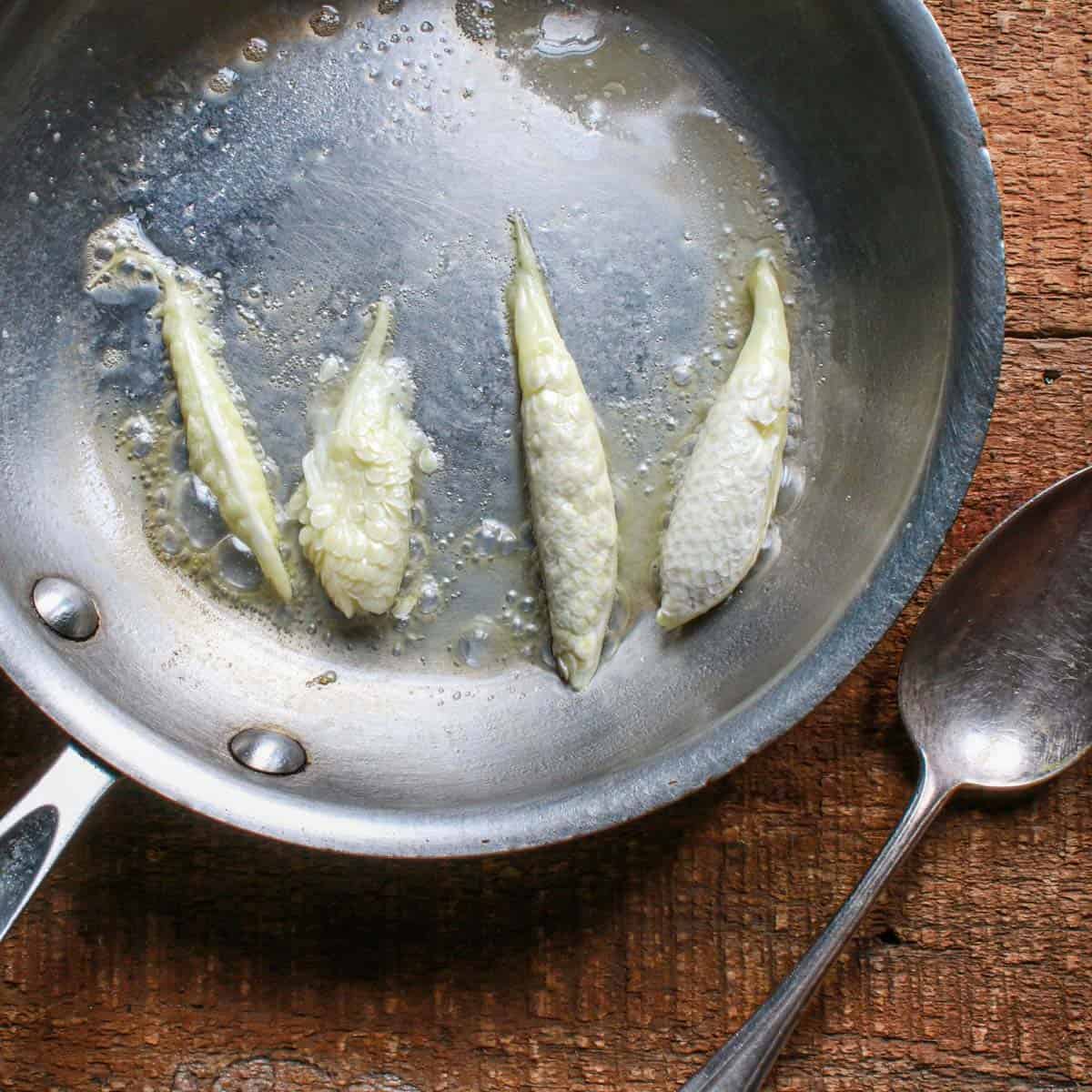

Sandy W.
As a child I was always told by my mother, who had lived through the Great Depression as a child in a family which survived by foraging, that in an emergency milkweed could be eaten. Well, I have a field with a lot of it, and I went to Wikipedia to verify which parts were edible. I was horrified to read that it is poisonous enough that some American native tribes used to use it as poison for weapons!
Thank you for this article. It has text with information as well as pictures to clarify what you say. This is incredibly useful and I'd like to say that things like this are some of the few parts of the internet which actually help people. Thank you for sharing your knowledge in such a useful way! I still have to verify exactly which species I have, though...
Alan Bergo
Thanks Sandy.
Steve
Interesting mention to be wary of getting the white sap or latex on your hands so that you don't get it in your eyes, as could happen if you wipe them in the heat of the sun. Reportedly wiping a mixture of fresh aloe gel and juicy latex of milkweed across closed eyelids is a remedy for removing cataracts - http://www.henriettes-herb.com/archives/best/1995/glaucoma Is it the leaves that would produce the latex sap?
Randy Wieser
Just noticed a bunch of ants black are going over the leaves like a bee would and at one point they seem to get off as their body convulsions for a second and then they go about to do it again... looks crazy.
Alan Bergo
Yes they can really be thick with ants sometimes.
Angela
I have seeds called "Milkweed Butterfly " are they used the same as "Common milkweed"?
A google search identified them as equal to dogbane.
Thanks
Alan Bergo
No those would make you very sick. This is part of why Latin names are very important.
Cindy K
I made the Creole Milkweed gumbo recipe from your cookbook for dinner tonight. It was great. Can I blanche and freeze the 2inch pods to save for the winter so I can make it when the pods aren't in season?
Alan Bergo
Hey Cindy. Glad that worked for you, and yes you can.
Dave Hedlund
Excellent information Alan! I picked some tops and buds this afternoon and steamed them for 5 minutes, as suggested. I went with some simple butter and a little dried ramp powder to experience the milkweed flavor, and they were very good! Maybe like broccoli rabe with a little green bean flavor, except more tender than broccoli. I only picked about 2 cups of milkweed buds, and left many of what I found, including any with monarch caterpillars. I'll definitely be eating these again. Thanks!
Alan Bergo
Thanks Dave.
Jen
I’m trying to ferment the flower buds. Do I need to blanch them prior to eliminate the toxins or will the fermentation process take care of that?
Alan Bergo
Fermenting from raw is fine but you could probably do it either way. I can't speak to the science of them getting denatured from fermentation but they're fine, especially as they're used in small amounts. I've served common milkweed flowers raw to the general public as a sprinkle on salads and other dishes for years now and I've never had any issues. Let me know if that makes sense-I'm here if you need.
Sharon Hiltz
I appreciate your focus on the cooking processes that make Milkweed safe to eat. What should we do beforehand, though? How should we handle uncooked Milkweed, during harvesting and preparation, to keep the sap off our hands and from potentially getting into the eyes? I've read that the sap can cause not only terrible eye irritation but possibly permanent damage to the cornea. Thank you!
Alan Bergo
I was just harvesting a large amount of flower buds and was thinking to myself I should add an extra snippet on that, so thanks for the reminder. Wear gloves if you harvest large amounts. A little sap on your hands is sticky, but has never caused an issue for me. I also make sure to put the plants into a paper bag or plastic bus tub as the sap is easier to remove than from the inside of a basket.
Sharon Hiltz
Thank you for being so quick to respond, and for adding the extra safety information to this awesome article! !
Nancy Botting
I am confused by your statement “ milkweed naysayers may claim that it’s not edible, that the plant is in fact poisonous to humans. This is not true, but it only applies to milkweed in it’s cooked form.”.
That statement says that milkweed is poisonous in its cooked form. Can you please explain?
Thank you
Alan Bergo
An unfortunate typo. Thanks for pointing it out, I adjusted it.
Liz
Can other milkweed species be eaten? There is a lot of Asclepias tuberosa (butterfly milkweed) in my area and I've always wondered if these are edible, since most recipes call for syriaca
Alan Bergo
No that one is toxic.
T
Thanks for all the very useful information.
Alan Bergo
Thanks T!